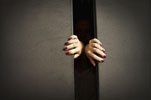Setting up a safe roomNovember 2009 Home owners planning to include a safe into their security plan, would immediately work with the idea of installing the traditional boxed steel unit somewhere in their home. They certainly would not by normal standards, think of including a safe for protecting their family too . . . Home owners planning to include a safe into their security plan, would immediately work with the idea of installing the traditional boxed steel unit somewhere in their home. They certainly would not by normal standards, think of including a safe for protecting their family too . . .
It is simply an unfamiliar concept to most South Africans, yet one that should not be as far down the agenda as it presently is. Referred to as a ‘safe room’ by security experts, it should not be overlooked.
A safe room is a place in the home that family members can escape to in the event of a break in. They are no longer just for the rich, who can afford hi-tech devices and steel walls. Setting up a functional safe room in the average home is, according to specialised security company Trellidor, easy and relatively inexpensive. A room that is properly organised will provide temporary shelter in the event of a home invasion and give you time to call for help.
10 steps to setting up your safe room
Choose a room with as few windows as possible and a door that opens outwards. The bathroom is often the best place as it usually has only one window to secure, and also has a toilet and running water.
Fortify the door with a high quality sliding security barrier fitted inside the room. This is especially important if you only have hollow core internal doors that could easily be kicked open.
Fit sliding security barriers to the windows. These will be an escape route for the entire family or a single member that can summon help after slipping out. In the event of a home invasion, you could shout for help out of this window, or sound an air horn to attract neighbours’ attention.
Keep a spare set of keys for the security barriers inside the safe room.
Have a panic button fitted at child-level in this room, or make sure a portable one is permanently left here.
Keep the supplies you would need in an emergency in a cupboard or on a shelf in the room.
Emergency supplies include a mobile phone and charger (some have battery chargers available now); a first aid kit; a torch (keep a fresh supply of batteries); water and food; defensive weapons such as pepper spray. If a family member is on regular medication or is inclined to have panic attacks, keep supplies of these medicines in the emergency supply kit.
Have emergency numbers stored in the mobile phone. In South Africa, the SA Police Services recommend you use the SAPS Emergency line 10111. Add your armed response service, a neighbour and/or relative, ambulance service, fire department and local police station.
Develop a family plan for emergencies and practise it without unnecessarily scaring the children. Part of this plan should include the instruction to never play with the emergency supplies in the safe room.
In an emergency, try to escape first. If this is impossible, lock yourselves in the safe room, phone the police and your security company and sit it out. Do not come out of the room until help arrives, unless there is an opportunity for someone to escape through the window and get help. Similar Articles
Related News
|

